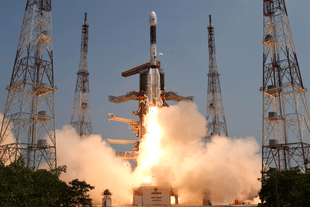News Brief
Why Did ISRO Face Setback In NVS-02 Orbit Raising? Here’s What You Need To Know
Vansh Gupta
Feb 03, 2025, 05:56 PM | Updated Feb 12, 2025, 01:40 PM IST
Save & read from anywhere!
Bookmark stories for easy access on any device or the Swarajya app.


The Indian Space Research Organisation (ISRO) has encountered an unexpected challenge in positioning the NVS-02 satellite into its designated orbit due to a valve malfunction.
The satellite, which is the second in the NVS series, was successfully launched on 29 January as part of ISRO’s historic 100th mission from Sriharikota, as reported by The Hindu.
Orbit Raising Operations Halted Due to Technical Glitch
Following the launch, ISRO intended to perform orbit-raising manoeuvres to transition the satellite to its final orbital slot. However, the space agency revealed on Sunday that the valves responsible for admitting the oxidiser to fire the thrusters did not function as expected, preventing the necessary orbit adjustments.
These operations were to be conducted by ISRO’s Master Control Facility (MCF) in Hassan, Karnataka. Despite the setback, ISRO confirmed that the satellite remains operational and is currently in an elliptical orbit.
"The satellite systems are healthy and the satellite is currently in elliptical orbit. Alternate mission strategies for utilising the satellite for navigation in an elliptical orbit is being worked out," ISRO stated, quoted as saying by The Hindu.
Launch Vehicle Performed Flawlessly, Communication Established
Despite the issue, ISRO assured that the NVS-02 navigation satellite was successfully injected into the intended Geosynchronous Transfer Orbit (GTO) with high precision.
Following the launch:
All launch vehicle stages performed as planned.
Solar panels were successfully deployed.
Power generation remains stable.
Communication with ground stations has been established.
NVS-02 is designed with navigation payloads in L1, L5, and S bands, alongside a ranging payload in C-band, similar to its predecessor NVS-01. The satellite is intended to replace IRNSS-1E at the 111.75ºE orbital position and employs a mix of indigenous and procured atomic clocks for precise timekeeping.
Vansh Gupta is an Editorial Associate at Swarajya.





